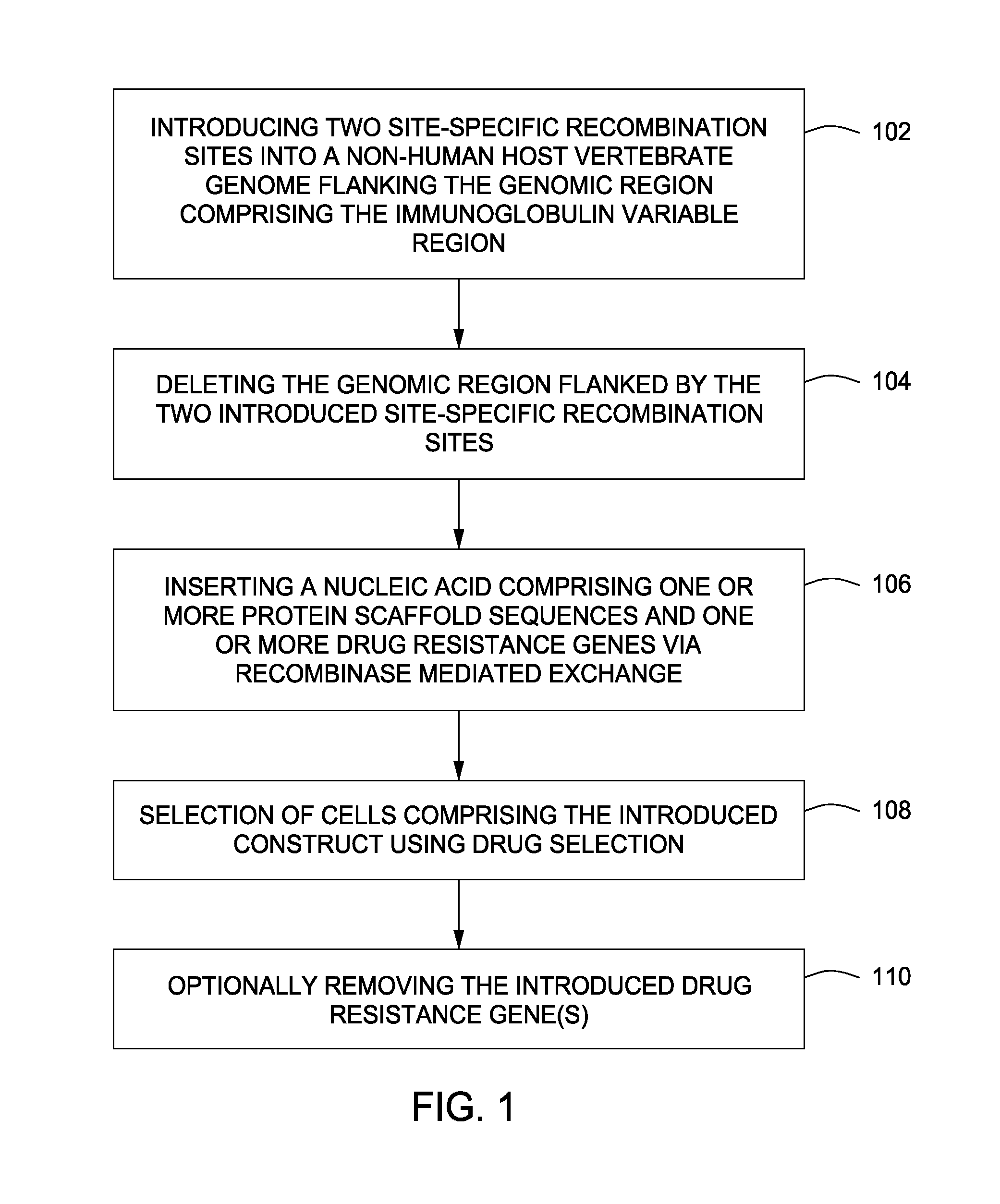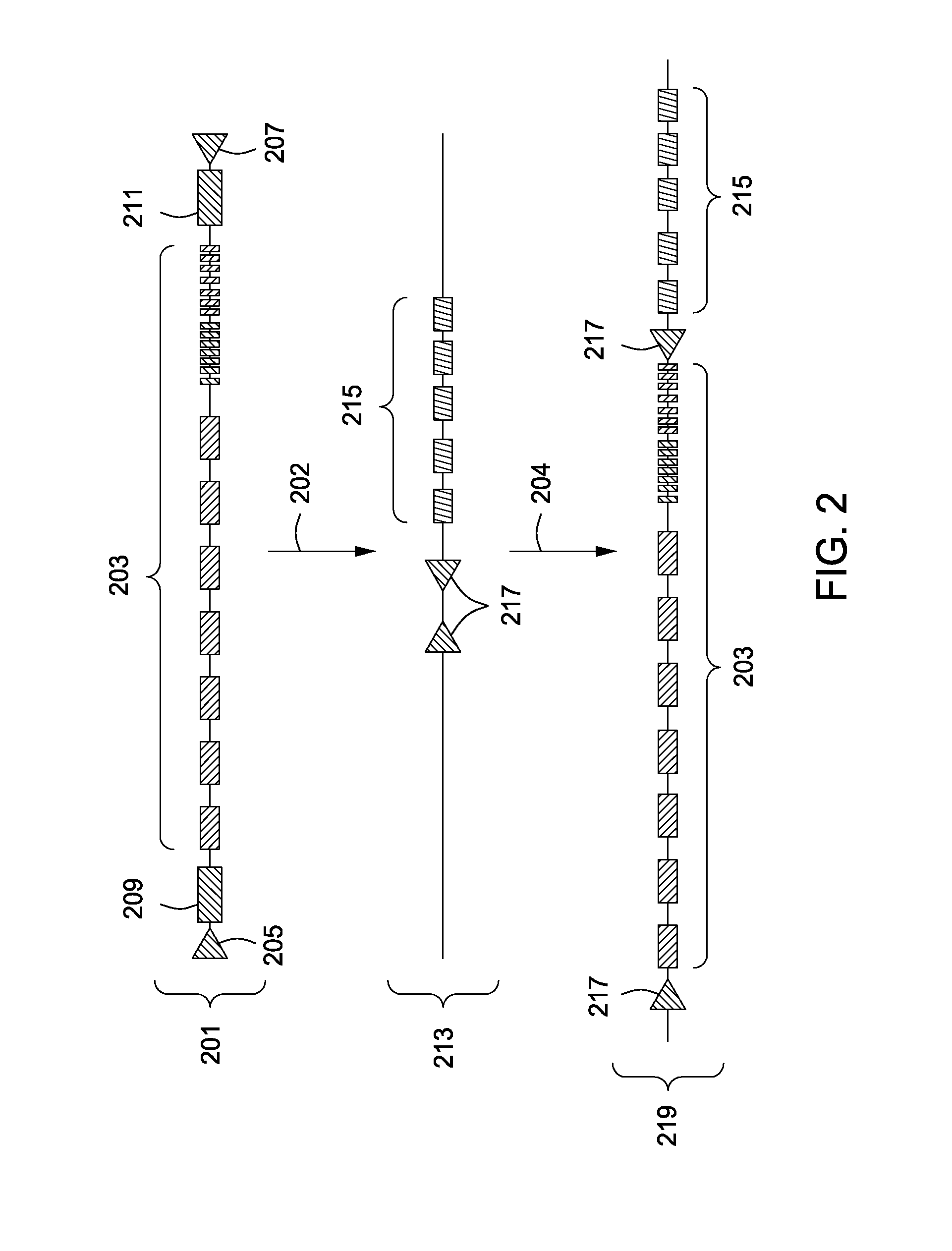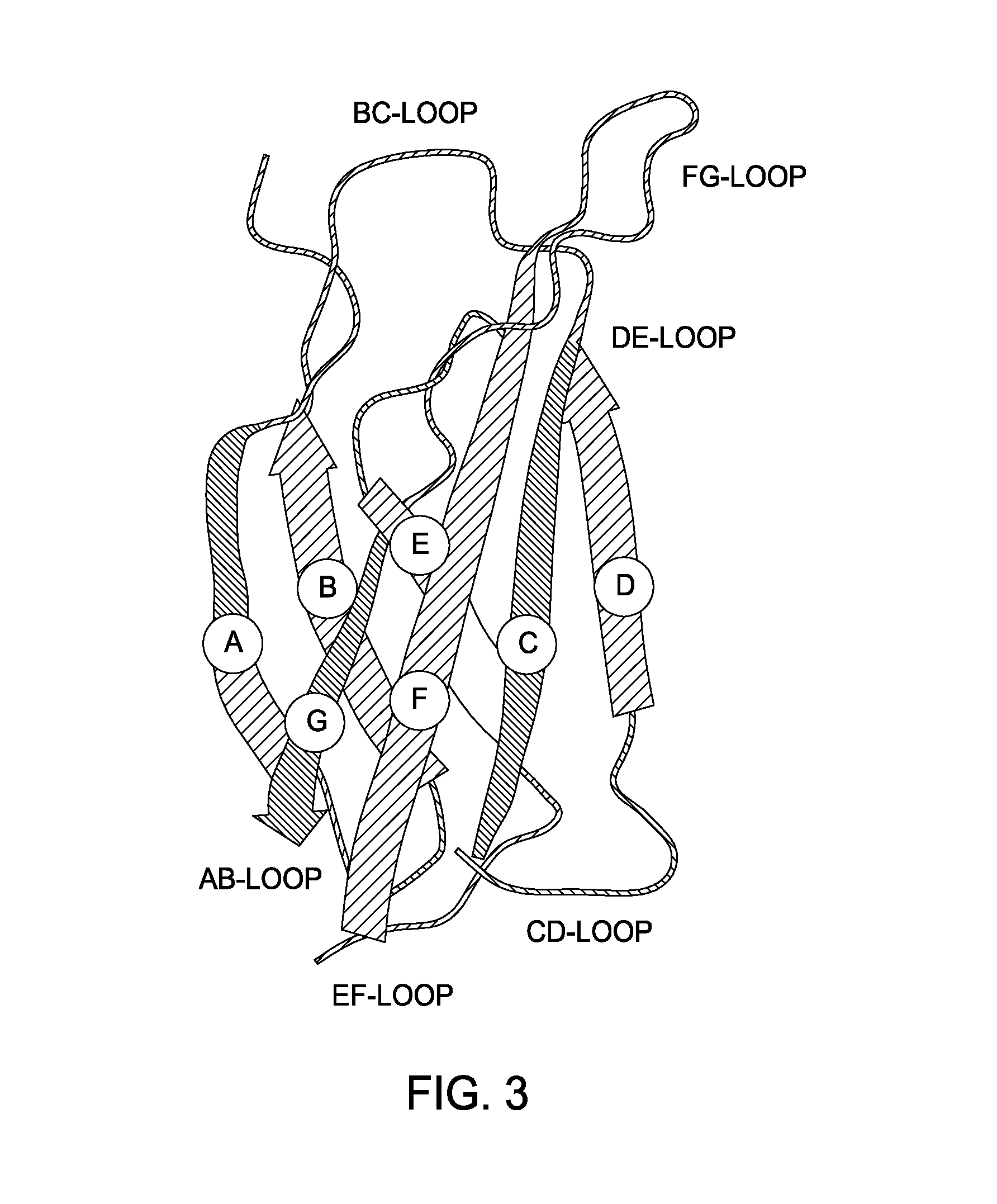Transgenic animals and methods of use
a technology of transgenic vertebrates and methods, applied in the field of transgenic vertebrates, can solve the problems of unmet clinical needs, lack of desired targeting specificity, and inability to address certain areas of monoclonal antibodies, and achieve less than optimal therapeutic properties
- Summary
- Abstract
- Description
- Claims
- Application Information
AI Technical Summary
Benefits of technology
Problems solved by technology
Method used
Image
Examples
example 1
Introduction of a Chimeric Immunoglobulin Region into the VH Gene Locus of a Mouse Genome
[0113]A method for replacing a portion of a mammalian genome with chimeric immunoglobulin region comprising adnectin or anticalin scaffold-encoding gene segments is illustrated in FIGS. 1-7. FIG. 1 shows a flow chart illustrating the different steps of this aspect of the invention. The method provides introducing two site-specific recombination sites into the host genome. Preferably this is accomplished by introducing a first site-specific recombination site into the mammalian genome, which may be introduced 5′ of the endogenous constant domain regions of the mammalian genome, followed by the introduction of a second site-specific recombination site, which in combination with the first site-specific recombination site flanks the endogenous immunoglobulin variable region. The flanked endogenous region upstream of the constant domains is deleted 102 and a synthetic nucleic acid sequence encoding o...
PUM
 Login to View More
Login to View More Abstract
Description
Claims
Application Information
 Login to View More
Login to View More - R&D
- Intellectual Property
- Life Sciences
- Materials
- Tech Scout
- Unparalleled Data Quality
- Higher Quality Content
- 60% Fewer Hallucinations
Browse by: Latest US Patents, China's latest patents, Technical Efficacy Thesaurus, Application Domain, Technology Topic, Popular Technical Reports.
© 2025 PatSnap. All rights reserved.Legal|Privacy policy|Modern Slavery Act Transparency Statement|Sitemap|About US| Contact US: help@patsnap.com



